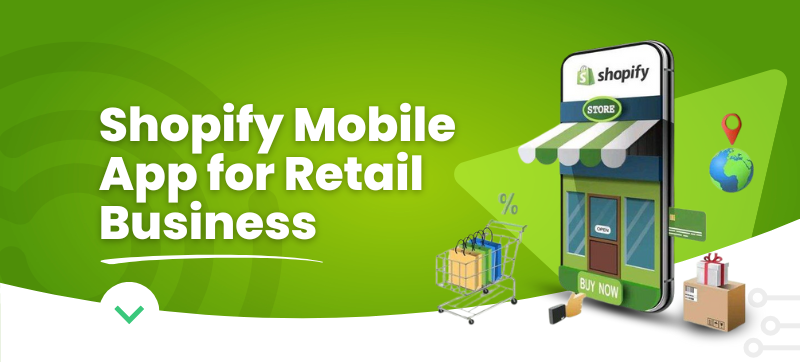Retail in 2025 is very different from what it used to be. Shoppers now demand speed, personalization, and seamless experiences directly on their mobile devices. A smooth mobile shopping experience isn’t optional, it’s what customers expect.
This is where Shopify mobile apps development comes in. For retailers trying to keep up with changing shopping habits, mobile apps are no longer optional, they are essential.
The key question is: are you ready to provide the mobile-first experience your customers demand or risk losing them to competitors who already do?
The Rise of Mobile-First Retail in 2025
In the past, simply having a website was enough for most retail businesses. Today, mobile devices dominate shopping behaviors and have become the primary way people shop.
A mobile app works faster than a website, works anytime and is designed to keep customers coming back. By investing in Shopify mobile app development, retailers don’t just sell products, they can build lasting relationships and increase customer lifetime value.
The Importance of Shopify Mobile Apps for Retail Businesses
The retail world has changed a lot in recent years. People are spending more time on their phones every day. They want a smooth shopping experience, whether at home, on the go, or in-store.
This is where Shopify mobile apps make a difference:
-
Faster Checkout & Payments: Reduce abandoned carts with a seamless purchase flow.
-
Real-Time Push Notifications: Send promotions, updates, and personalized offers instantly.
-
Improved Customer Retention: Stay connected post-purchase and build brand loyalty.
Retailers who focus on mobile-first strategies aren’t just keeping up, they’re leading the way. Shopify mobile apps are a key to building loyalty, boosting sales, and driving long-term growth.
Core Features That Make Shopify Mobile Apps Important in 2025
Shopify mobile apps are changing the way retail works. Their features address challenges that businesses and customers have faced for years.
- One-Click Checkout: Makes buying faster and simpler, reducing abandoned carts.
- Push Notifications: Share updates and promotions to keep customers informed.
- AI-Powered Personalization: Suggests products based on customer interests.
- Omnichannel Sync: Connects online and physical stores for smooth operations.
Comparison of Key Features:
| Feature | Benefit for Retailers | Benefit for Customers |
| One-Click Checkout | Reduces cart abandonment | Quick and easy purchase process |
| Push Notifications | Keeps customers informed | Receive timely updates and deals |
| AI-Powered Personalization | Helps understand customer preferences | Gets relevant product suggestions |
These features not only make operations easier but also help create a modern, customer-friendly shopping experience.
Key Considerations for Successful Shopify Mobile App Development & How to Overcome Them
While Shopify mobile apps offer many benefits, implementing them can come with challenges. Some common concerns include development costs, data security, and ensuring customers adopt the app.
- Cost Concerns: Many think custom apps are too expensive. In reality, Shopify provides scalable solutions, meaning you can start small and expand later.
- Security Risks: Payment fraud and data breaches scare retailers. Yet Shopify is PCI-compliant and offers multiple layers of protection.
- User Experience Issues: A poorly designed app frustrates customers. That’s why UI/UX expertise is critical to making apps intuitive and enjoyable.
The truth is, these challenges are real but solvable. With the right Shopify mobile apps development partner, retailers can sidestep risks and unlock the full power of mobile commerce.
The Role of Shopify Mobile Apps in Retail Performance
Here’s where things get exciting. Shopify Mobile Apps for Retailers are not just improving retail, they’re redefining it.
- Direct-to-Consumer Growth: Brands can skip middlemen and engage buyers directly.
- Social Commerce Integration: Apps connect with Instagram, TikTok, and Facebook shops.
- Immersive Experiences: AR try-ons and AI-powered product previews are no longer future tech, they’re standard.
- Global Expansion: Shopify mobile apps make it easy to accept multiple currencies and languages, opening doors to international markets.
Real-world examples prove this shift. Retailers using Shopify apps are reporting higher engagement and stronger loyalty programs. When customers download your app, they’re committing to your brand. That’s a bond no website alone can create.
Common Challenges Retailers Face and How Shopify Mobile Apps Help
Many retail businesses encounter similar challenges:
- Shoppers browse products but do not complete purchases.
- Websites load slowly on mobile devices.
- Cart abandonment rates remain high.
- Scaling for peak demand can be unpredictable.
These issues can reduce profits and affect customer loyalty. Traditional websites, even if responsive, often struggle to address them effectively.
Mobile apps designed for retail can help overcome these challenges. Features like optimized navigation, push notifications, one-click checkout, and integrated payment systems improve the shopping experience across devices.
Conclusion
Shopify mobile apps are playing an increasingly important role in modern retail. By providing faster checkouts, personalized experiences, and seamless customer engagement, they help retailers adapt to changing shopping habits. While implementing mobile apps comes with challenges such as cost, security, and design considerations, these can be managed with careful planning and the right development support.
For retailers, investing in Shopify mobile apps can enhance customer satisfaction and support growth, but success depends on thoughtful execution and aligning app features with customer needs. The retail landscape continues to evolve, and mobile apps are one of several tools that can help businesses stay relevant and connected with their audience.






